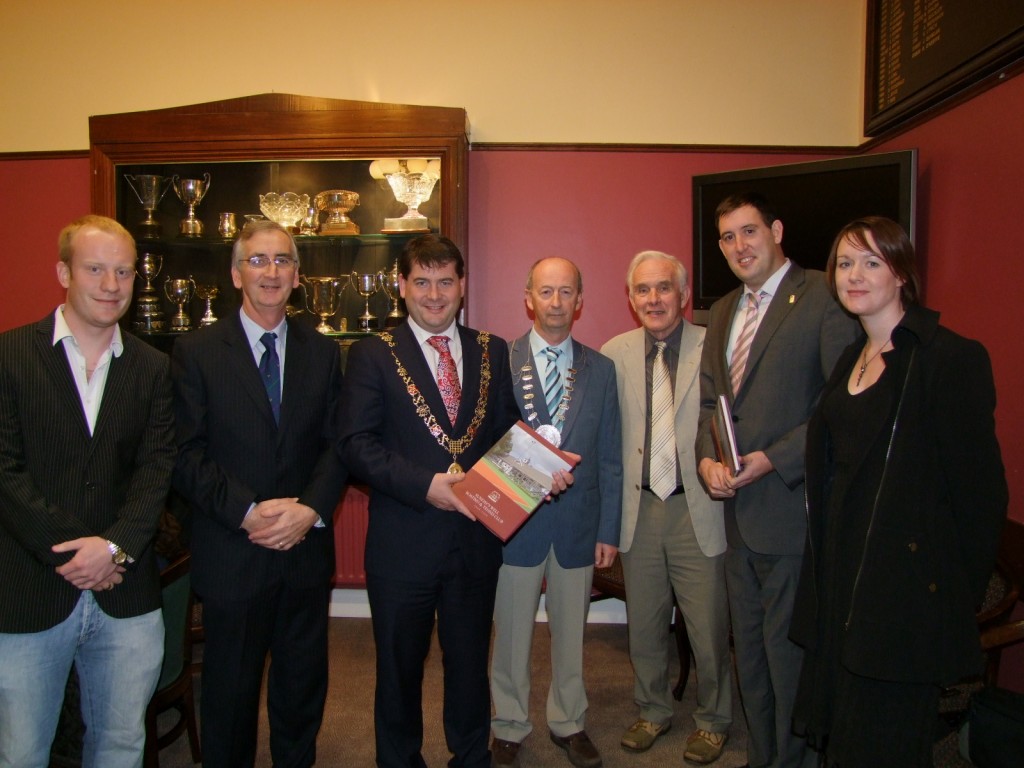
I had the pleasure in the last two years of researching the history of the Sunday’s Well Boating and Tennis Club. This book was published last week. Sifting through over 100 years of documents, minute books, photographs and other material, as well as a substantial collection of artefacts, is a time-consuming business requiring almost infinite patience and judgment.
The history of any club is essentially the story of a community coming together to enjoy a favoured pastime, and Sunday’s Well Boating and Tennis Club on the Mardyke in Cork is no different. Inscribed beneath the club’s ornate weather vane, the dates 1899-1999 are an instant reminder of the deep history that surround the club and its place in the social and cultural history on Leeside. The club has faced a myriad of challenges over the years. The knock-on effects of a failing economy in the 1950s, the unlikely role squash played in dragging the club out of financial trouble and the contentious issues of female membership are perhaps the most memorable, but they are by no means exclusive.
Beautifully situated just west of Cork city centre on the banks of the Lee, the club emerged as a by-product of annual boating regattas at the Mardyke. Boating, with a high society classification in the 19th century, was a popular pastime on the river adjacent to Sunday’s Well. Due to limited revenue, boating events such as mini regattas were not organised every year, but the races are remembered for the Chinese lanterns and bunting that illuminated the gardens at the riverbank, as well as the balloon and firework displays at sundown. In 1899, inspired by a successful Sunday’s Well Regatta and Water Carnival held that July, the Sunday’s Well Boating and Tennis Club was founded. It was formed by a number of organisers of the regatta, several of whom were residents in Sunday’s Well.
Very little is known about the construction of the first clubhouse or the first building used. The first edition of its rules and bylaws illustrate that learned legal gentlemen were involved in its formative years. Their vision of high standards in all aspects of the club has been retained through the years, and Sunday’s Well continues to strive towards excellence.
Tennis continues to be the mainstay of the club, but boating, billiards, squash, cricket, bowls, card-playing and fishing, among others, have all had halcyon years throughout the club’s history. Within the premises, each successful sporting season is immortalised in the club’s minute books, perpetual tournament trophies and on the numerous photos that adorn the clubhouse walls. The minute books also give an insight into the significant voluntary input that continues to be a hallmark of the club, detailing the work of the committees that have been key strands in the club’s development. In addition, the reading room’s Rolls of Honour remembers the contribution of the various chairmen and sporting captains. As with any social history, there are countless characters that do not feature on a roll of honour. The early decades of the 20th century saw the club put down roots and consolidate its aims. In this vein, its rules were brought into conformity with the Registration of Clubs (Ireland) Act in 1904.
The upkeep of the grounds was important to the club’s image, and monies from members were pumped into improving the infrastructure of the club, be it purchasing billiard balls, providing electricity or trying to solve the ever-present problem of a collapsing river bank. But while improvements were being made around the clock, time was also ticking for an ageing all-male membership.
During this time, running the club proved a constant struggle; its financial situation gradually worsened while a bank overdraft steadily increased. The Munster and Leinster Bank pressed for a reduction in the overdraft, a request the club couldn’t accommodate while many members were failing to pay their subscriptions on time. Conscious of the unstable state of the Irish economy and its effects at local level, various committees endeavoured to keep subscription fees low. However, these still trebled between 1949 and 1967, and membership predictably nose-dived as a result. The club lost almost a third of its membership in 1963 alone, dropping from 200 to 144.
The club’s very existence was in jeopardy during this uncertain period. But the sanctioning of limited junior and female memberships in the 1960s – the latter proving an extremely thorny issue until it was finally resolved with the advent of full female membership in 1994 – helped stem the financial tide, while new blood galvanised the club socially. However, it was the introduction of squash in the 1970s that set the club back on the path to
success.
Recent years have seen the club take giant strides in improving and modernising its facilities, with a number of keynote developments during the 1990s and 2000s. While the old-age charm of the clubhouse and billiard room remain, they are now complemented by a gym, a conservatory overlooking the river, a refurbished kitchen, a new administration office and committee room, an extended car park and a new roadway entrance.

Lord Mayor of Cork, Cllr Dara Murphy with the book’s creative team, Alan Kelly, Alymer Barrett, Chairman of the Club Michael Buckley, Matt Murphy, Cllr Kieran McCarthy & Leila Cotter